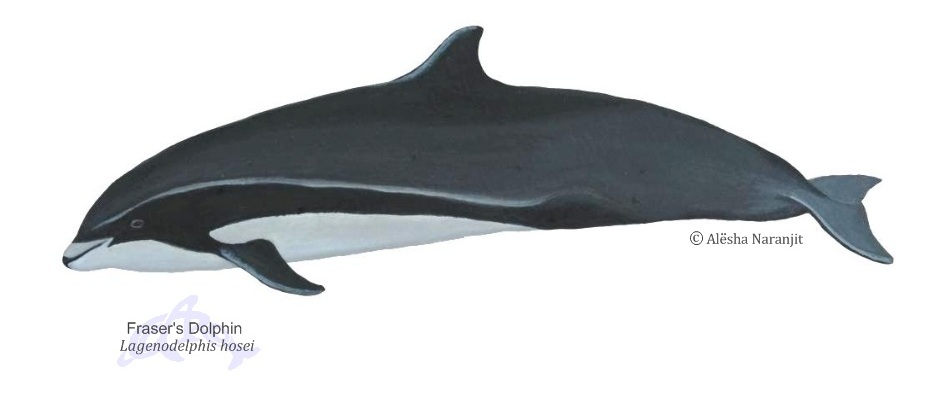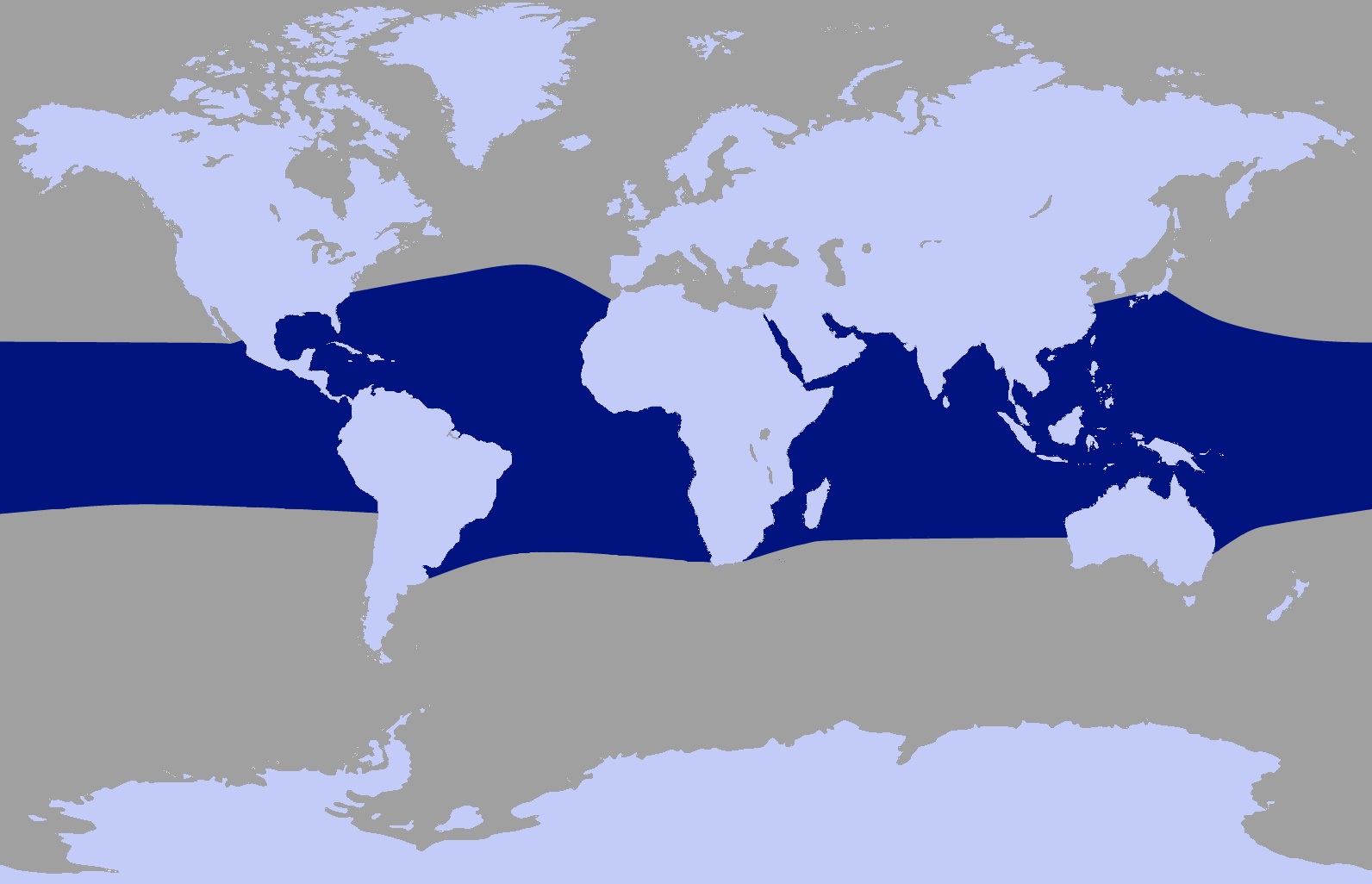Fraser's Dolphin

Classification Other Names: Sarawak Dolphin, Shortsnout Dolphin, Bornean Dolphin, White-bellied Dolphin, Fraser's Porpoise Suborder: Odontoceti | Description Usually in large groups, often with mixes with other species and highly surface active.
|
Fraser's Dolphin Ecology Range:Tropical waters usually between 30°N and 30°S. Usual Habitat: Relatively deep, offshore waters but sometimes found in deep, coastal waters. Usual group size: Largely unknown. Main Diet: Mesopelagic fish, crustaceans and cephalopods | Global range of the Fraser's Dolphin
Fraser's Dolphin are likely to be found in the dark blue areas |
Conservation Information
Protection and Conservation Status |
Reports of Fraser's Dolphins in Trinidad and Tobago
There are currently no reports of this species in Trinidad and Tobago.
References
The above information was obtained from the following sources:
- A Princeton Field Guide: Whales Dolphins and Other Marine Mammals of the World by Hadoram Shirihai and Brett Jarrett (2006)
- Smithsonian Handbooks: Whales Dolphins and Porpoises by Mark Carwardine and illustrated by Martin Camm (2002)
- The Whale and Dolphin Conservation Society's Species Guide at http://www2.wdcs.org/species/index.php
- The IUCN Redlist at http://www.iucnredlist.org
- The SPAW protocol Annexes with links available at http://www.car-spaw-rac.org/?Annexes-of-the-SPAW-Protocol,83
Acknowledgements
We would like to thank the following people for the use of the art work and photographs:
- Alësha Naranjit (Illustration of Fraser's Dolphin)
